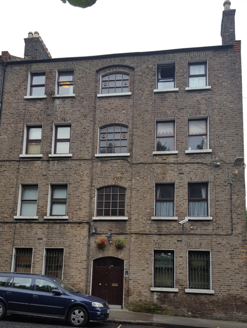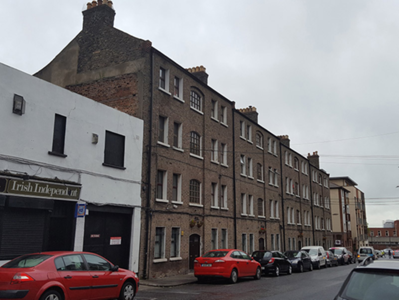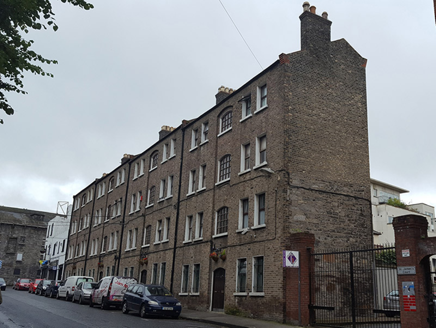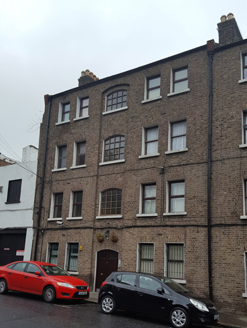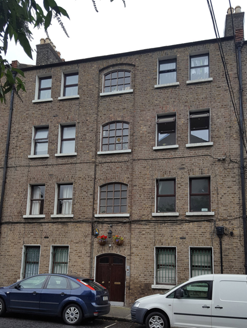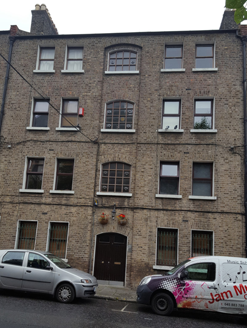Survey Data
Reg No
50081115
Rating
Regional
Categories of Special Interest
Architectural, Historical, Social
Original Use
Apartment/flat (purpose-built)
In Use As
Apartment/flat (purpose-built)
Date
1875 - 1880
Coordinates
314039, 233848
Date Recorded
04/01/2017
Date Updated
--/--/--
Description
Attached group of four five-bay four-storey purpose-built flats, built 1877. Pitched slate roofs with brick chimneystacks and clayware pots, with cast-iron rainwater goods. Brown brick walls, with recessed blind arches to central bays. Square-headed openings with stone sills and render reveals, with metal grills to ground floor openings, having replacement windows. Segmental-headed openings to central bays, with replacement windows and doors.
Appraisal
Designed by Thomas Newenham Deane for the Dublin Artisan Dwelling Company (DADC), this is the first purpose-built block of flats in the city. The site was leased by the DADC from the Grand Canal Company. Opened in 1878, for those who could afford them, the Echlin Buildings were a marked improvement in living conditions. In the 1871 Census just under 26,000 Dublin families – 44% of the population – were listed as living in fourth class single-room accommodations. Typically these were rooms in decaying Georgian houses, occasionally shared with other families, with a single outdoor communal privy serving all occupants of the house. Unsurprisingly, disease and infant mortality were commonplace. In contrast, six months after the first tenants moved into the Echlin Buildings, the DADC was pleased to announce that there had not been a single death in any of the company's flats. Using Dublin Corporation's ratepayer records, some information on the first residents and their conditions can be gleaned. Eight of the thirty-six units were vacant in 1882. Only one householder was female. The average rent varied according to location with tenants occupying street level flats paying five shillings-and-sixpence per week and tenants occupying the fourth floor paying three shillings-and-four pence. Curiously, the city council took a different approach when calculating the rateable valuations and placed the first floor flats in a higher tax band than the ground or upper floor flats. Though the complex has lost some of its exterior joinery, it retains much of its traditional form and character.
